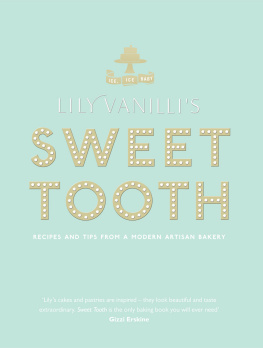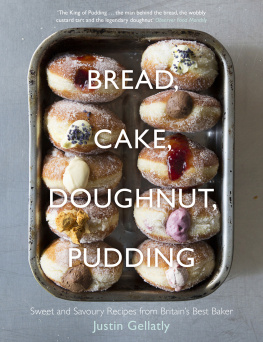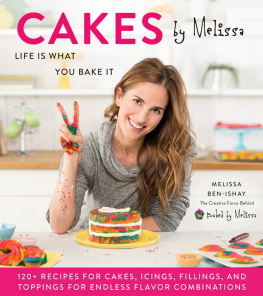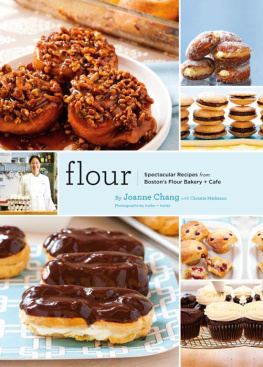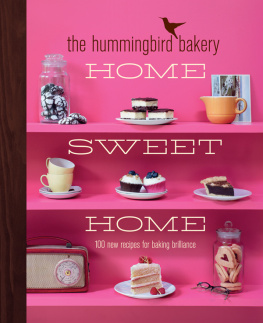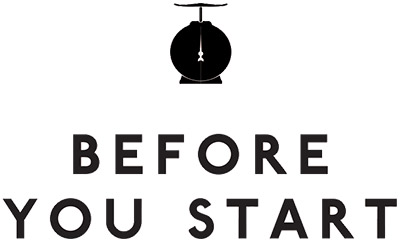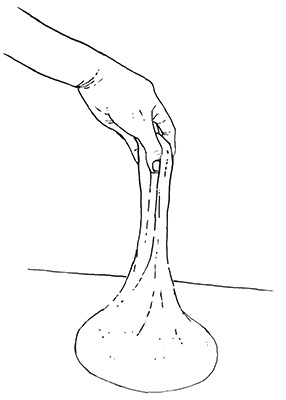INGREDIENTS
Understanding the ingredients youre working with will help you become a better baker. This section looks at some core ingredients.
SUGAR
SUGAR will work its way in some form into most of the sweet things you make. It does more than add sweetness: depending on the recipe, sugar can add moisture, tenderness, stability, act as a preservative, enhance other flavours and caramelise. Understanding more about how different sugars can affect what youre baking will help you to choose them confidently and adapt a recipe to suit you. Here is a list of some of the sugars and their uses.
GRANULATED An all-purpose sugar, highly sweet and with a very simple flavour. It has larger crystals than caster sugar, and while it can be used in most recipes as a substitute if youre really stuck, its not ideal unless specified.
CASTER: A very finely ground sugar that dissolves faster than white granulated sugar, and creams more readily. It is especially useful for making meringues and for creaming butter and sugar to form the basis of sponge cakes. If you dont have any caster sugar around, you can make your own by grinding granulated sugar for a couple of minutes in a food processor (just give it a couple of seconds to settle before opening the lid to avoid clouds of sugar dust).
GOLDEN CASTER SUGAR: White sugar with added molasses: it can be substituted for caster sugar in any recipe and will give it a fuller, slightly caramel flavour.
LIGHT/DARK BROWN SUGAR: Another caster sugar with added molasses, this adds colour as well as a deeper caramel flavour. Its very moist and will increase the tenderness of a cake. Store sealed in a cool dry place to prevent it from drying out.
MUSCOVADO: A type of unrefined natural sugar, available in light or dark brown, that has a strong flavour of natural molasses. Its colour and flavour come from sugarcane juice left in during the production process; as a result it is sticky, but can be used like any other brown sugar.
The sugars above can be substituted for each other in most cases, and although this will affect the bake, it shouldnt spoil what you are making. Experiment with substituting sugars to see how flavour and texture are affected try making a meringue with golden caster sugar and you will see that it has a much deeper flavour, while a sponge made with dark brown sugar will have a denser and softer texture.
ICING SUGAR/CONFECTIONERS SUGAR:
Granulated sugar that has been ground to a fine powder, often with cornflour added to prevent clumping and crystallisation. It dissolves very rapidly and is good for making icing and buttercream, and for dusting finished cakes.
UNREFINED SOFT BROWN SUGAR: These sugars have a distinctive caramel taste. Light and dark soft brown sugars have different flavour and moistness properties,so you can only replace one with the other in small quantities.
MOLASSES: A by-product of sugar manufacturing, this dark syrup is less sweet than sugar and has its own strong flavour and more acidity.
HONEY: In some cake recipes honey can be substituted for granulated or caster sugar and will produce a moist and dense cake, but you will need to reduce the amount, as it is much sweeter and browns faster. Try using approximately half the amount of honey to sugar, reducing the liquid in the recipe accordingly, and lower the oven temperature slightly too.
LIQUID GLUCOSE: A syrupy sweetener. It inhibits crystallisation of sugars, so is useful for making sorbets, jams and hard candies.
GOLDEN SYRUP: An inverted sugar syrup that is much sweeter than sugar, this also has a slightly caramel flavour. It can also be used to a lesser extent to help inhibit crystallisation of sugar. Perfect for making gingerbreadand flapjacks.
FLOUR
FLOUR provides the foundation for most baked goods. It gives structure, texture and to some extent flavour.
CHOOSING FLOUR
One of the key things to know about flour is that it contains proteins which when combined with liquid form gluten | see right |. The type of flour you choose and the method for each recipe will be largely affected by how much gluten you want to develop. Most of the recipes in this book use plain flour and a method that encourages minimal gluten development, for light, airy cakes and flaky pastries. I try to use organic flours where possible, as they are of better quality and give better results. Heres a list of some types of flour and their uses.
PLAIN WHITE FLOUR: This is the flour you will use for most of the recipes in this book; its a soft flour with a low protein content suited to making pastries and cakes. Plain flour is formed when the bran is removed from wholemeal flour | see below | .
SELF-RAISING WHITE FLOUR: A pre-made combination of plain white flour and a chemical leavener (a raising agent such as baking powder). You can make a decent substitute for self-raising flour by adding 1 teaspoon of baking powder for every 120g of plain flour. Make sure you combine them evenly before adding them to a batter.
WHOLEMEAL FLOUR: This includes the nutritious wheat germ and bran from the wholegrain wheat; the amount of wholegrain that is retained varies (all the way up to 100%), and the percentage will be stated on the packet. Wholemeal flour can be plain or self-raising.
SPELT: We use spelt flour a lot at the bakery. An ancient precursor of modern wheat, it has a beautiful rich, slightly nutty flavour, and while it does contain gluten, it is often found to be gentle on people with a gluten intolerance.
BREAD FLOUR: Often labelled as strong flour, bread flour is ground from hard wheat with a high content of gluten, which contributes elasticity to a dough.
WHY SIFT FLOUR?
The importance of sifting flour divides opinion among bakers many swear they never do it and their bakes dont suffer as a result. I personally sift flour at least once, partly because I like doing it but also because it aerates the flour and loosens up any clumps to ensure it absorbs liquid evenly. It is another step you can take towards perfecting a light, evenly risen cake.
STORING FLOUR
Flour is best used relatively fresh, so avoid stockpiling or baking with flour that has been knocking about in the back of your cupboard for ever. Buy flour in smaller batches and try to use it within three months. Store airtight in a cool place.
GLUTEN
GLUTEN is formed when two proteins found in flour come into contact with liquid and combine, like a two-part glue. Exposure to heat and friction will develop gluten to build a web-like network of elastic and expansible strands within your dough or batter. This network traps air pockets and forms the structure of your bake.
The more gluten is developed (by mixing or kneading), the stronger and longer the strands get, giving your bake a chewy and tough texture desirable in bread but not in pastry or cakes. The illustration above shows a dough with a well developed gluten structure. In many recipes, specific methods are put in place just to inhibit the development of gluten beyond the bare minimum necessary for building a supportive structure for example, minimal handling and the use of cold equipment and ingredients, or coating flour in butter to limit the amount of liquid that reaches it.
BUTTER
DEPENDING on how its used and what youre baking, butter plays many different roles, but in general it tenderises, adds flavour and helps keep your bakes fresh. Below are a few things to know about butter, and on you can learn how to make your own.

